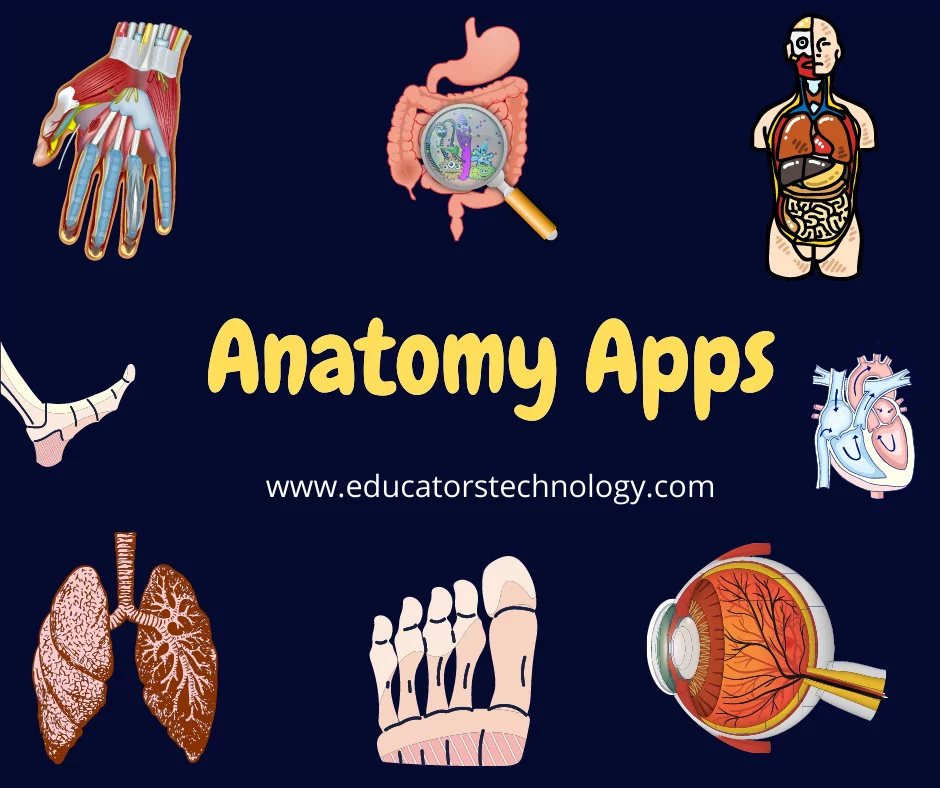Learning about the anatomy and physiology of human body does not have to be a tedious task. Technology has tremendously facilitated it. From online experimental labs to 3D virtual tours, students are now able to explore the human body in interactive and immersive learning experiences that are way more engaging.
The purpose of this post is to share with you a collection of some of the best apps that students can use to learn human anatomy and physiology. Some of the common features provided by these apps include: 3D models of body organs, high resolution illustrations and visual, interactive tools, quizzes ,and exercises, in-depth articles, and many more.
Human Anatomy Atlas can serve as both a textbook and a reference students can use to explore and learn about the human body. The Atlas offers over 10.000 anatomical models with detailed descriptions and illustrations available in different languages including English, Italian, Japanese, Spanish, German,m, French, and more.
‘The base purchase includes complete male and female gross anatomy models that can be dissected, common muscles actions, select microanatomy models and sample animations. Additional in-app purchases can extend the atlas to include more detailed 3D dental models, and animations that explain physiology and common pathologies.’
Essential Anatomy 5 is another good anatomy app for students. With its amazing graphics and responsive interface, Essential Anatomy provides students with an immersive learning experience.
Essential Anatomy embeds both male and females models with a total of 8200 anatomical structures and 11 systems. ‘The app is fully 3D, meaning that you can view any structure in isolation, as well as from any angle and represents the latest in groundbreaking 3D technology and innovative design.’
Anatomist is a quiz game that enables students to practice and develop their anatomy skills. The game is designed by medical students and covers 24 areas of the human body with over 3000 anatomy identifications. Students can compete with other students from all around the world.
Anatomist does not require Internet connection and is available in various languages. However, the World Health Organization Essential Medicines quiz is only available in English.
The Human Body takes students on an interactive journey to discover and learn about the different systems making up the human body including the skeletal, circulatory, digestive, respiratory, integumentary, nervous, and muscular systems.
The stunning graphics and sound effects bring the different body organs into life. Students get to ‘feel the body make it run and breathe, assemble and pull apart a skeleton, see how the eye sees, watch sound vibrations travel through the ear canal, and more.’
BioDigital Human provides students with a virtual 3D model of the human body. The app contains over 700 3D anatomy models to help students learn about anatomy, physiology, and health conditions such as cancer, injuries, and heart ailments. Some of the features BioDigital provides include: interactive 3D anatomy models for male and female, over 600 interactive 3D health condition models, personalized library, 3D interaction tools, supports 8 languages, and more.
Anatomy systems covered include: cardiovascular system, muscular system, nervous system, skeletal system, reproductive system, urinary system, endocrine system, digestive system, connective tissue, and more.
Visual Anatomy provides students with a wide variety of educational resources to help them practice and learn anatomy and physiology. These resources include muscle action movies, visuals, over 350 features points, audio pronunciations, latin names, muscle descriptions, periodic tables, and many more. Visual Anatomy embeds numerous interactive tools including muscle highlighting tool to visualize individual muscle, quizzes mode, rotational models, and more.
TeachMe Anatomy is another great anatomy app for students. It is a comprehensive anatomy reference with over 400 articles covering different anatomical topics. The app also offers 3D anatomy models and HD illustrations that allow students to engage in immersive learning experiences about the human body.
Other features provided by the app include: regional anatomy (includes head, neck, neuroanatomy, upper limb, back, abdomen, pelvis, and more), systemic anatomy (includes skeletal system, muscular system, nervous system, circulatory system, digestive system, respiratory system, and more), question bank (includes over 1700 multiple choice questions with their answers, and many more.
Pocket Anatomy offers a wide range of resources and tools to enhance students anatomy learning. Students can click on any organ of the human body to get access to detailed information about the organ.
Pocket Anatomy also covers several anatomical structures. ‘Pocket Anatomy includes full 3D male and female anatomy as well as detailed stand alone visual information on circulatory, connective tissue, digestive, integumentary, lymphatic, muscular, reproductive, respiratory, skeletal and urinary systems.’






